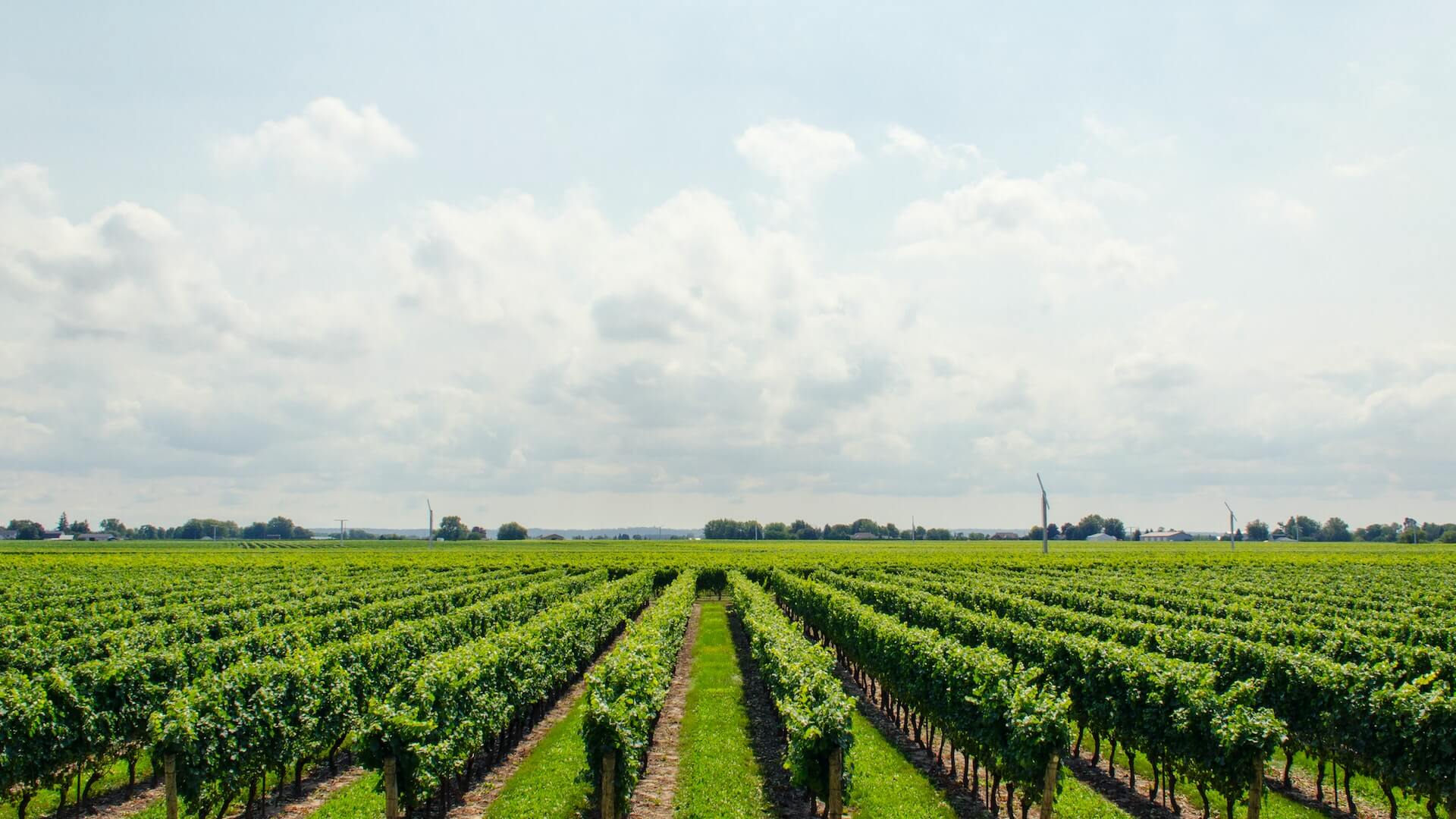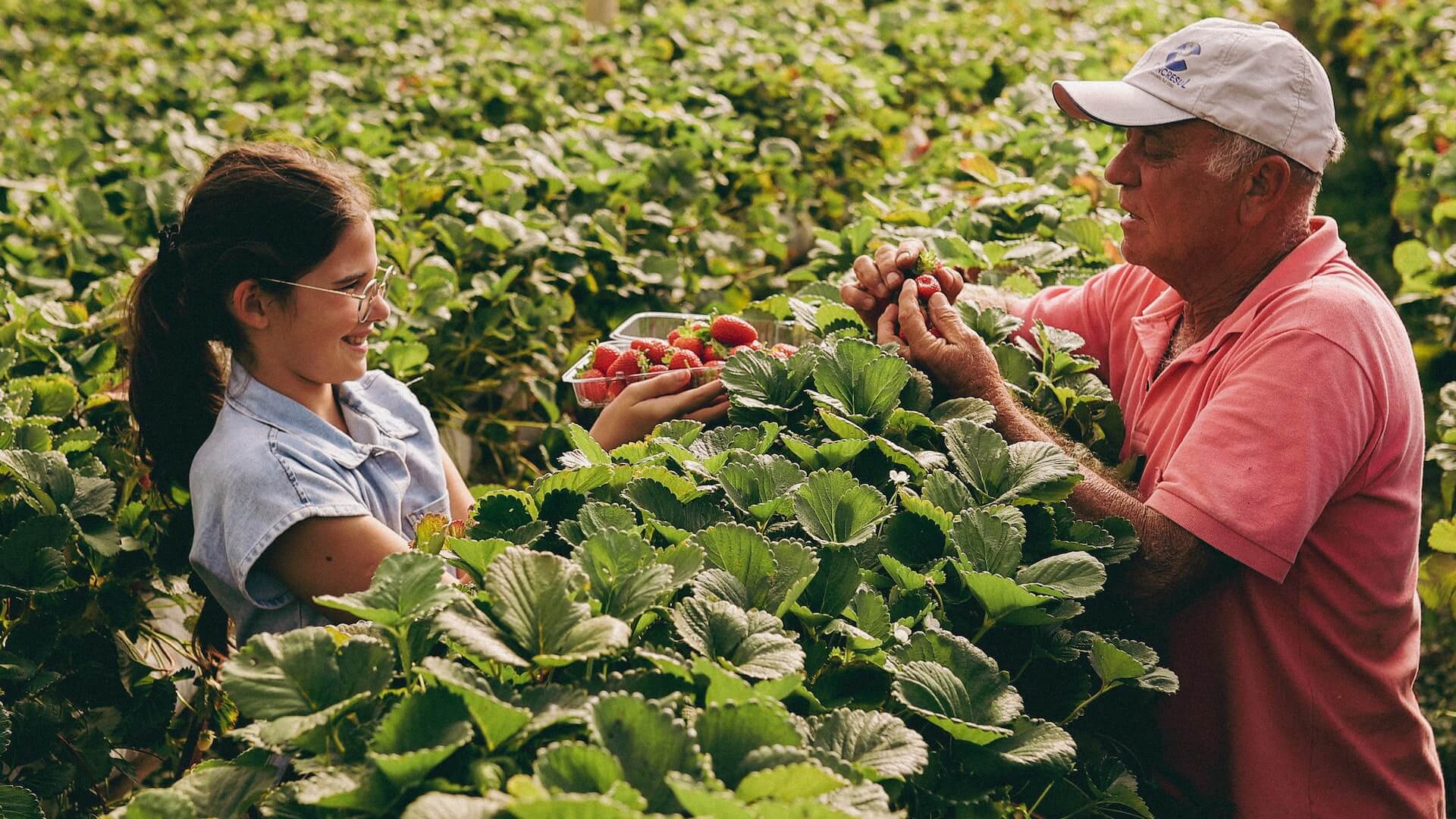As our global population continues to grow, the demand for food production is only increasing. To meet this need, the agriculture industry is continuously evolving and innovating, finding new ways to increase crop yields, reduce waste, and minimize environmental impact. The future of agriculture lies in sustainable practices and innovations that promote efficiency, productivity, and conservation. In this post, we will explore some of the latest and most exciting developments in agriculture, from precision farming and vertical farming to regenerative agriculture and agroforestry. We will also take a look at some of the challenges facing the industry today, and how these innovative practices can help to address them. Join us as we delve into the future of agriculture and the exciting innovations that are shaping the way we grow our food.
Technological advancements in agriculture: Robotics, drones, and AI
Technological advancements in agriculture have revolutionized the way we cultivate crops and raise livestock. Robotics, drones, and artificial intelligence (AI) have emerged as game-changers in the industry, offering new possibilities for increased efficiency, productivity, and sustainability.

Robots are being used in various agricultural tasks, from planting and harvesting to weeding and monitoring crop health. These automated machines can perform repetitive tasks with precision and accuracy, reducing the need for manual labor and increasing operational efficiency. They can also minimize crop damage and optimize resource utilization, leading to higher yields and improved sustainability.
Drones, equipped with advanced sensors and imaging technology, have also found their place in agriculture. These unmanned aerial vehicles can capture high-resolution images of farms, providing valuable insights into crop health, irrigation needs, and pest infestations. With this information, farmers can make data-driven decisions, optimize resource allocation, and take preventive measures to protect their crops. Drones can cover large areas quickly, saving time and effort compared to traditional scouting methods.
AI, powered by machine learning algorithms, is another technological advancement transforming agriculture. By analyzing vast amounts of data, AI algorithms can provide farmers with valuable predictions and recommendations. For instance, AI can analyze weather patterns, soil conditions, and historical data to optimize irrigation schedules, determine the best planting times, and predict crop yields. This enables farmers to make informed decisions, minimize risks, and maximize their productivity while reducing environmental impact.
These technological advancements not only enhance productivity and efficiency but also contribute to sustainable practices in agriculture. By optimizing resource utilization, reducing waste, and minimizing the use of harmful chemicals, robotics, drones, and AI enable farmers to adopt more sustainable and environmentally friendly practices. This is crucial in the face of growing concerns about climate change, water scarcity, and the need to feed a rapidly growing global population.
Precision farming: Maximizing efficiency and minimizing waste
Gone are the days of blanket treatments and broad-scale farming techniques that often resulted in excessive use of resources and environmental damage. With the advancements in technology and data analytics, farmers now have the ability to tailor their farming practices to the specific needs of each plant or crop.
One of the key components of precision farming is the use of sensors and monitoring systems. These sensors are strategically placed throughout the farm, collecting data on soil moisture, temperature, nutrient levels, and even pest activity. This real-time information allows farmers to make informed decisions about irrigation, fertilization, and pest control, ensuring that resources are only used where and when they are truly needed.
In addition to sensors, precision farming also utilizes GPS technology and satellite imagery. This enables farmers to create precise maps of their fields, identifying areas that may require additional attention or treatments. By focusing their efforts on specific areas rather than treating the entire field uniformly, farmers can significantly reduce the amount of inputs used, such as water, fertilizers, and pesticides. This not only reduces costs but also minimizes the environmental impact associated with excessive use of these resources.
Moreover, precision farming empowers farmers to adopt sustainable practices, such as conservation tillage and cover cropping. By analyzing data on soil health and composition, farmers can determine the most suitable cover crops to plant during off-seasons. These cover crops help prevent soil erosion, retain moisture, and enhance soil fertility, reducing the need for synthetic fertilizers and herbicides.
Vertical farming and urban agriculture: Feeding the world in limited spaces
In recent years, the global population has been steadily increasing, posing significant challenges to traditional agriculture practices. However, the future of agriculture lies in innovative solutions such as vertical farming and urban agriculture, which have the potential to revolutionize the way we grow and consume food.
Vertical farming is a revolutionary concept that involves cultivating plants in vertically stacked layers, using a controlled environment and artificial lighting. This method allows for year-round production of crops in urban areas, regardless of the external climate or weather conditions. By utilizing advanced hydroponic or aeroponic systems, vertical farms can optimize resource usage, reduce water consumption, and eliminate the need for harmful pesticides or herbicides.
One of the key advantages of vertical farming is its ability to maximize land use efficiency. With urbanization and limited available farmland, vertical farms can be built in multi-story buildings, unused warehouses, or even underground tunnels. This vertical expansion not only saves land but also reduces transportation costs and carbon emissions associated with long-distance food transportation.
Urban agriculture, on the other hand, focuses on cultivating food within the boundaries of cities. It utilizes vacant lots, rooftops, community gardens, and even indoor spaces to grow a wide range of crops. Urban agriculture promotes local food production, reduces food miles, and strengthens community connections by involving residents in the cultivation process.
Both vertical farming and urban agriculture offer numerous benefits for the future of agriculture. They provide opportunities for sustainable food production, reduce the environmental footprint of agriculture, and enhance food security in urban areas. Moreover, these innovative practices can inspire and empower individuals to take control of their food sources, fostering a sense of self-sufficiency and resilience.
Sustainable practices in agriculture: Organic farming, regenerative agriculture, and permaculture
As society becomes more aware of the environmental impact of traditional farming methods, there has been a growing shift towards embracing organic farming, regenerative agriculture, and permaculture.

Organic farming focuses on cultivating crops and raising livestock without the use of synthetic fertilizers, pesticides, or genetically modified organisms (GMOs). Instead, organic farmers rely on natural methods to enhance soil fertility, control pests, and promote the overall health of the ecosystem. By avoiding the use of harmful chemicals, organic farming aims to minimize pollution, preserve biodiversity, and produce food that is free from harmful residues.
Regenerative agriculture takes the concept of sustainability a step further by emphasizing the restoration and improvement of soil health. This approach focuses on building soil organic matter, enhancing biodiversity, and increasing the resilience of agricultural systems. By implementing practices such as cover cropping, rotational grazing, and minimal tillage, regenerative farmers aim to regenerate degraded soils, sequester carbon dioxide from the atmosphere, and improve water quality.
Permaculture, on the other hand, is a holistic design system that seeks to create sustainable and self-sufficient ecosystems. Inspired by natural patterns and principles, permaculture integrates agriculture, forestry, water management, and social systems to create resilient and productive landscapes. By mimicking nature’s processes and utilizing principles such as diversity, interconnection, and recycling, permaculture fosters the creation of sustainable food systems that require minimal external inputs.
The adoption of these sustainable practices in agriculture not only benefits the environment but also supports the long-term viability of farming communities. By reducing reliance on synthetic inputs, farmers can decrease production costs and increase profitability. Moreover, sustainable farming practices often result in improved soil health, increased water efficiency, and enhanced biodiversity, which contribute to more resilient and productive agricultural systems.
Climate-smart agriculture: Adapting to climate change and reducing greenhouse gas emissions
As our climate continues to change, farmers are faced with new challenges such as extreme weather events, shifting growing seasons, and the spread of pests and diseases. To combat these challenges, innovative practices and technologies are being developed to adapt to climate change while also reducing greenhouse gas emissions.
One such innovation is precision agriculture, which utilizes advanced technologies like satellite imagery, drones, and sensors to optimize farming practices. By collecting data on soil moisture, nutrient levels, and crop health, farmers can make informed decisions about irrigation, fertilization, and pest management. This not only improves crop yields and reduces input costs but also minimizes the environmental impact of farming.
Another sustainable practice gaining traction is the use of cover crops and crop rotation. Cover crops, such as legumes or grasses, are planted during fallow periods to improve soil health, prevent erosion, and reduce the need for synthetic fertilizers. Crop rotation, on the other hand, involves alternating different crops in a specific sequence to break pest and disease cycles, enhance soil fertility, and reduce the reliance on chemical pesticides.
Furthermore, agroforestry is emerging as an effective climate-smart practice. By integrating trees and shrubs into agricultural landscapes, farmers can create diverse ecosystems that not only provide shade and windbreaks but also sequester carbon dioxide from the atmosphere. Agroforestry systems also promote biodiversity, enhance soil fertility, and provide additional sources of income through the harvest of timber, fruits, nuts, or medicinal plants.
In addition to these practices, advancements in agricultural biotechnology are enabling the development of climate-resilient crops. Scientists are working on breeding varieties that are more tolerant to drought, heat, or salinity, allowing farmers to continue cultivating crops in adverse conditions. Genetic engineering techniques also hold promise in developing crops with higher nutritional value, increased pest resistance, and reduced dependence on synthetic inputs.
Water management and conservation: Smart irrigation systems and drought-resistant crops
With increasing concerns about water scarcity and the need for sustainable practices, innovative solutions are emerging to address these challenges.
Smart irrigation systems are revolutionizing the way water is used in agriculture. These systems utilize advanced technologies such as sensors, weather data, and automation to optimize irrigation efficiency. By monitoring soil moisture levels and adjusting irrigation accordingly, farmers can ensure that crops receive just the right amount of water, minimizing waste and reducing water usage. This not only conserves water but also reduces energy consumption and lowers costs for farmers.
Another aspect of water management is the development of drought-resistant crops. As climate change continues to impact weather patterns, droughts are becoming more frequent and severe. To mitigate the effects of water scarcity, scientists and agricultural researchers are working on breeding and genetic engineering techniques to develop crops that can thrive with minimal water requirements. These drought-tolerant crops have the potential to improve agricultural productivity and resilience in regions prone to water scarcity.
In addition to technological advancements, sustainable water management practices are also gaining traction in agriculture. These practices focus on optimizing water use through techniques like precision farming, crop rotation, and water recycling. Precision farming involves using data-driven approaches to determine irrigation schedules, fertilizer application, and other farming practices, maximizing resource efficiency. Crop rotation helps reduce water requirements by alternating crops with different water needs, allowing the soil to retain moisture and minimize water loss. Water recycling involves treating and reusing wastewater for irrigation purposes, reducing reliance on freshwater sources.
The role of biotechnology in agriculture: GMOs and genetic engineering
Biotechnology has emerged as a game-changer in the field of agriculture, with genetically modified organisms (GMOs) and genetic engineering playing a significant role in shaping the future of farming practices. While this topic remains highly controversial, it is essential to understand the potential benefits and implications of these innovations.

GMOs are created by altering the genetic makeup of plants or animals through the introduction of specific traits or genes. This technology enables scientists to enhance crop productivity, increase resistance to pests and diseases, and improve tolerance to adverse environmental conditions. By introducing desirable traits into crops, farmers can potentially achieve higher yields while reducing reliance on chemical pesticides and fertilizers.
Genetic engineering, on the other hand, involves manipulating the DNA of organisms to create new varieties with desired characteristics. This technique allows for precise modifications, such as enhancing nutritional content, improving shelf-life, and developing resistance to pests or herbicides. These advancements have the potential to address global food security challenges by creating more resilient and productive crop varieties.
While biotechnology in agriculture offers promising solutions, it is crucial to address concerns regarding its safety, environmental impact, and potential risks. Critics argue that GMOs may lead to unintended consequences, such as the development of pesticide-resistant pests or the contamination of non-GMO crops. Additionally, there are ethical considerations surrounding the patenting and ownership of genetically modified seeds, which can impact farmers’ autonomy and economic sustainability.
To ensure the responsible and sustainable use of biotechnology in agriculture, there is a need for rigorous scientific research, transparent regulations, and ongoing assessment of potential risks. It is crucial to strike a balance between innovation and environmental stewardship, considering the long-term implications on biodiversity, ecosystems, and human health.
Collaboration and knowledge-sharing in the agricultural industry
As the world faces increasing challenges from climate change, population growth, and limited resources, it is crucial for farmers, researchers, and industry experts to come together and share their insights, experiences, and expertise.
In recent years, there has been a growing trend towards open collaboration and the sharing of data and best practices in agriculture. Farmers are connecting with one another through online platforms, forums, and social media groups to discuss challenges, exchange ideas, and learn from each other’s successes and failures. This collective knowledge-sharing allows farmers to stay updated with the latest techniques, technologies, and sustainable practices, helping them make informed decisions and improve their agricultural practices.
Furthermore, collaboration extends beyond just farmers. It involves partnerships between farmers and researchers, as well as collaboration between different sectors of the agricultural industry. By working together, researchers can better understand the needs and challenges faced by farmers, and develop innovative solutions and technologies that address these issues.
Collaboration also plays a crucial role in promoting sustainable practices in agriculture. Sharing information about environmentally friendly farming methods, such as organic farming, precision agriculture, and regenerative farming, can help reduce the industry’s impact on the environment. By learning from each other’s experiences and implementing sustainable practices, farmers can minimize the use of chemical inputs, conserve water resources, and promote biodiversity on their farms.
In addition, collaboration enables the development of new technologies and tools that can revolutionize the agricultural industry. By pooling resources and expertise, researchers and industry experts can work together to create innovative solutions for challenges such as increasing crop yields, improving soil health, and reducing post-harvest losses. This collaborative approach sparks creativity and accelerates progress towards a more sustainable and efficient agricultural sector.
Conclusion
With the ever-growing global population and the increasing demand for food, it is crucial that we adopt new technologies and practices to ensure the long-term viability of our agricultural systems. From vertical farming to precision agriculture, there are countless innovative solutions that are revolutionizing the way we grow and produce food. By embracing these advancements and implementing sustainable practices, we can build a more resilient and efficient agricultural sector that can feed the world while minimizing its impact on the environment. The future of agriculture is bright, and we are excited to witness the incredible transformations that lie ahead.



